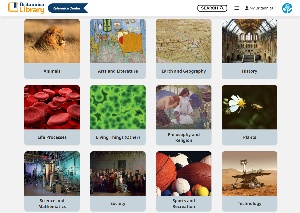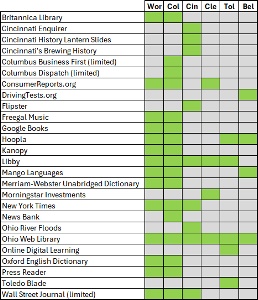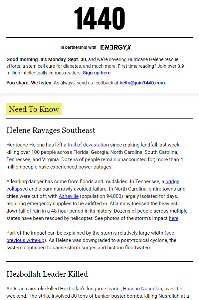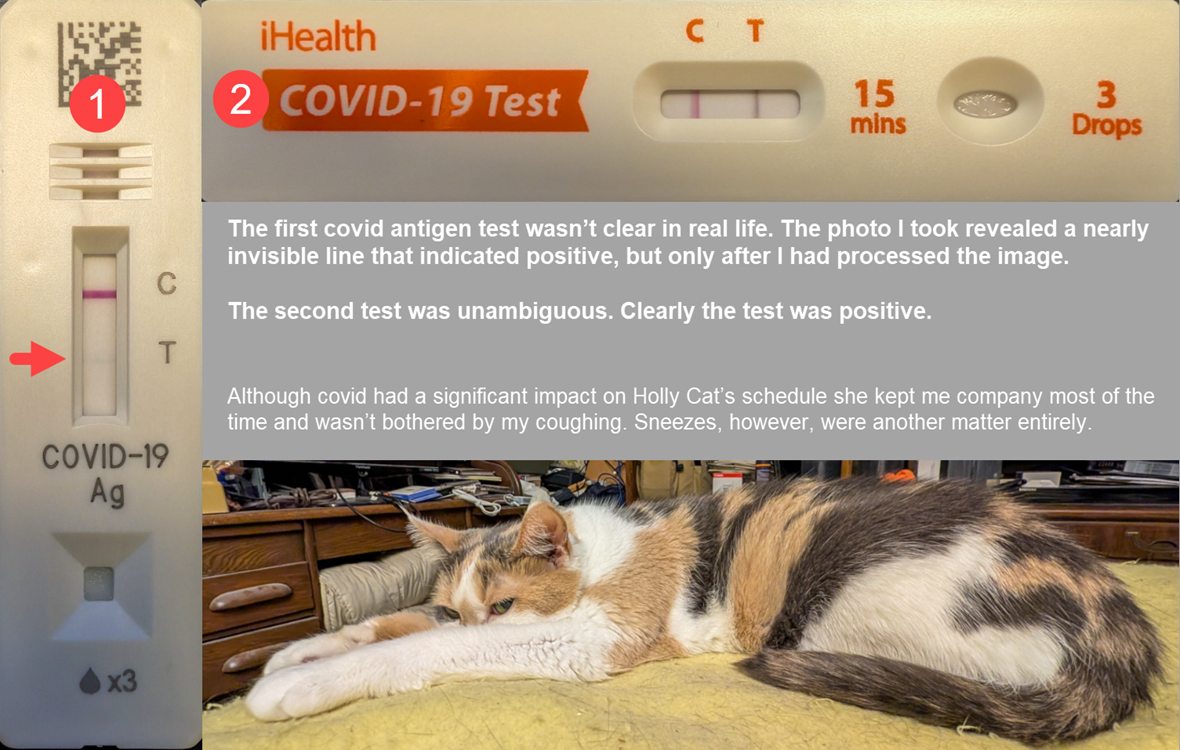Listen to the Podcast
25 October 2024 - Podcast #905 - (20:39)
It's Like NPR on the Web
If you find the information TechByter Worldwide provides useful or interesting, please consider a contribution.

If you find the information TechByter Worldwide provides useful or interesting, please consider a contribution.
This isn’t the first time I’ve written about libraries and it’s not likely to be the last. That’s because libraries have so many resources that are available without charge to patrons.

Libraries have books, CDs, DVDs, and other media on offer. Some also allow patrons to bring their files to the library, or upload them, to be printed for free. You can borrow ebooks and audio books. Many offer access to other resources, and that’s what today’s report is about.
Click any small image for a full-size view. To dismiss the larger image, press ESC or tap outside the image.
 First, though, consider which libraries you can borrow materials from. Central Ohio is library rich with 17 library systems that are part of a consortium. A library card from any of those libraries provides access to all physical and digital resources owned or licensed by any of the library systems. This includes single-location libraries such as that in Grandview Heights and Bexley, to library systems with multiple locations such as Worthington Libraries and Upper Arlington Libraries, to the Columbus Metropolitan Library with its 22 branches.
First, though, consider which libraries you can borrow materials from. Central Ohio is library rich with 17 library systems that are part of a consortium. A library card from any of those libraries provides access to all physical and digital resources owned or licensed by any of the library systems. This includes single-location libraries such as that in Grandview Heights and Bexley, to library systems with multiple locations such as Worthington Libraries and Upper Arlington Libraries, to the Columbus Metropolitan Library with its 22 branches.
The consortium gives access to all central Ohio libraries, including some outside Franklin County, but not the other large libraries in the state. But living in central Ohio doesn’t eliminate the opportunity to use digital resources from Cincinnati, Cleveland, Dayton, and Toledo. Any resident of Ohio can sign up for a card from each of those library systems. You’re limited to using only digital resources unless you travel to the library and provide an ID with your address on it.
There are valid reasons for creating accounts at other libraries. An ebook that has a huge wait-list in central Ohio may be available faster, and sometimes immediately, in Cleveland, Cincinnati, Dayton, Toledo, or Bellefontaine. Yes, I even have a library account in Logan County. As I’ve mentioned a time or ten, that’s where I’m from. In addition to being able to obtain some ebooks faster, having accounts at alternative libraries may also provide access to resources not available at your home library.
Most libraries will have Libby for online ebooks and Hoopla for audio and video resources, but some offer newspapers and magazines, reference materials, research links, and database access. That’s the best reason I can think of for joining all libraries you can, both local and state. In Ohio, most (maybe all) libraries will enroll anyone who lives in the state. This isn’t true everywhere, but it’s worth checking out wherever you live.
Because all central Ohio libraries are part of the consortium that shares books and media, it’s less important to have borrowing privileges from all of them. After all, a book or DVD or CD that’s owned only by the London Public Library is available to anyone who is a member of any consortium library. But digital resources are different. Different libraries provide access to some online resources that may not be available at other libraries.
 The presence of a green marker in the chart at the right means that I have confirmed the resource is available at this library. The absence of a green marker means only that I have not confirmed the resource’s availability at this library, only that I haven’t confirmed it. Library systems offer a variety of resources, some may have only a few while others have more than 100. Having access to local history resources is another key benefit to signing up with more than one library.
The presence of a green marker in the chart at the right means that I have confirmed the resource is available at this library. The absence of a green marker means only that I have not confirmed the resource’s availability at this library, only that I haven’t confirmed it. Library systems offer a variety of resources, some may have only a few while others have more than 100. Having access to local history resources is another key benefit to signing up with more than one library.
Green indicates that the library definitely
offers access to the resource,
and the absence of green means only that I have
not confirmed that the library offers access. >>>
Britannica is generally available, but the Cincinnati Enquirer is available only in Cincinnati, the Toledo Blade is available only in Toledo. Cleveland highlights Monrningstar Investments even though it may be available from other library systems; Cleveland is simply where I encountered it first. The Logan County (Bellefontaine) library provided access to Ohio’s driving test information, and this may be available from other libraries.
Libraries within easy driving distance also host community events, workshops, and programs. By having cards from multiple libraries, you can participate in a broader range of activities.
I’ve already mentioned why I have access to ebooks in the state’s larger libraries. Ebooks and audio books may be available sooner from a library that isn’t your primary library. For physical books and media, interlibrary loan services can be helpful: These interlibrary loan agreements vary from one library to another and you may be able to obtain a rare book that’s not available directly from any of your local libraries by using a statewide system.
Signing up for multiple library cards can help the libraries, too. Funding often depends on the number of members a library has and more members means better funding so that libraries can maintain their services.
I’m sure that you know how much importance I place on Benjamin Franklin’s invention. In 1727, he established “Junto” in Philadelphia. It was a discussion group that sought “mutual improvement” through intellectual dialogue, and was also known as the Leather Apron Club. Books were rare and expensive at the time, but Franklin had an idea.
Franklin created the Library Company of Philadelphia 1731. There was a subscription fee. The Library Company eventually allowed non-shareholders to borrow books, but required a deposit for loaned book. By 1800, there were more than 40 lending libraries throughout the United States.
Today libraries are supported by taxpayers and there are few better investments.
Anyone who’s old enough to remember when AM radio was king might think 1440 Daily Digest is some sort of radio station site. It’s not, although 1440 would be a valid frequency in the United States.
1440 is one of what broadcasters called “graveyard” frequencies that often had more than 100 stations assigned, most of them low-power, directional, or daylight operation only. Sometimes all three. The stations on 1440 are mostly class B, C, and D stations
But I digress. A lot, and in fact the name has nothing to do with radio frequencies, so I’ve just wasted a bit of your time dragging you down this rabbit hole. The name refers to the year the printing press was invented, but that may not be entirely accurate because the printing press was probably invented in 1438. As Maxwell Smart would have said in the old Get Smart TV series, “Missed it by THAT much!” But there’s more. Multiply 60 by 24 and you’ll get 1440, the number of minutes in a day, and the 1440 Daily Digest says it wants to help people make each minute count by delivering concise, factual, unbiased news.
It’s a free service that’s supported by ads and you receive one email each day with a news summary. They’ve been around for about five years and, if you don’t want to sign up for the newsletter, you can read the daily digest on the website.
The fact that it’s free tells us one thing: We are the product. Our eyeballs are being sold to advertisers, but that’s “the American Way”. It’s how newspapers, radio, and television work. Even NPR and PBS. During pledge breaks, we hear about the importance of donations from listeners and viewers. Those donations are critical, but businesses and organizations that “underwrite” programs are described on air in what sound a lot like commercials.
Click any small image for a full-size view. To dismiss the larger image, press ESC or tap outside the image.
 Still, 1440 News receives high ratings from Media Bias Fact Check. There are two primary criteria, bias that describes the political leaning, left or right, and credibility that describes the accuracy of the information. The best possible rating would be least biased with very high factual reporting. 1440 is rated as “least biased” and “high” factual reporting, one step down from the top.
Still, 1440 News receives high ratings from Media Bias Fact Check. There are two primary criteria, bias that describes the political leaning, left or right, and credibility that describes the accuracy of the information. The best possible rating would be least biased with very high factual reporting. 1440 is rated as “least biased” and “high” factual reporting, one step down from the top.
| Site | Bias | Factuality |
| Microsoft News (MSN) | Left-center | High |
| Fox News | Extreme right | Mixed |
| Wall Street Journal | Right | Mostly Factual |
| Reuters | Least Biased | Very High |
| New York Times | Left Center | High |
| Washington Post | Left Center | Mostly Factual |
| One America News | Extreme Right | Low |
| The Young Turks | Left | Mixed |
| New York Post | Right | Mixed |
| Washington Examiner | Extreme Right | Mixed |
| New York Daily News | Left Center | High |
I see nothing wrong with consuming reports from organizations with left or right bias, or even from those that have low factuality ratings so long as you understand that there may be errors, omissions, and distortions that are not intended to be truthful. If you’re seeking truth and not just your own bias confirmation, it’s essential to consider multiple points of view.
 1440 News does little or none of its own reporting, instead choosing to select well-written articles from news organizations that are less biased and more accurate. Some of the sources referenced recently include the Associated Press, British Broadcasting Corporation, CBS News, CNBC, India Today, London Daily Mail, National Aeronautics and Space Administration, Nature, Science Alert, Stanford University, TechCrunch, The Atlantic, The Wall Street Journal, Variety, and many more.
1440 News does little or none of its own reporting, instead choosing to select well-written articles from news organizations that are less biased and more accurate. Some of the sources referenced recently include the Associated Press, British Broadcasting Corporation, CBS News, CNBC, India Today, London Daily Mail, National Aeronautics and Space Administration, Nature, Science Alert, Stanford University, TechCrunch, The Atlantic, The Wall Street Journal, Variety, and many more.
If there’s one significant concern I have about 1440 News, it’s this: There is virtually no differentiation between editorial content and ads. Ads are preceded by a small line of text that starts with “In partnership with”. That’s an insufficient distinction.
The daily emails themselves are brief and cover just the most visible events. The breadth and depth cannot be compared to what’s found in the New York Times, the Washington Post, the Wall Street Journal, the Christian Science Monitor or even the national/international news section of a big-city newspaper. That doesn’t mean it’s useless. It’s not and it does provide a concise and fair summary of the big stories. Following links in the reports sometimes leads to a paywall. In some cases, readers can continue by accepting ads. If not, reading more may require a subscription to the source site.
1440 News is a decent addition to whatever source you use now for news, particularly if your go-to source is one that’s in the more biased spectrum or one that sometimes plays a bit loose with the truth.
For more information or to sign up for the free daily summary by email, visit the News 1440 website.
It finally happened. Phyllis and I both contracted covid. Back in October 2021, a lot of scientists were trying to work out what some people were calling the “end game” for covid. We were still uppercasing the word COVID then and it was becoming increasingly clear that there was no end game.
If we can develop vaccines to all but eliminate diseases such as smallpox and polio, why can't we do it for covid? That's a reasonable question and the answer involves mutation. The smallpox and polio viruses mutate slowly. Influenza and covid viruses, on the other hand, mutate quickly. That's why there are annual flu vaccines.
So epidemiologists suggested that covid would probably never be eliminated, but it could be transitioned from a pandemic disease to an endemic disease with vaccines. In brief, pandemic refers to an outbreak that occurs over a wide geographic area and affects an exceptionally high proportion of the population and endemic refers to a disease that is constantly present, but that spreads at a stable rate.
Everyone will probably be exposed to covid, but not everyone will get covid. And that would be true even if vaccines were 100% effective, which they are not. There are lots of reasons for that. For covid, it's largely because the virus keeps changing. In other cases, an individual's immune system reaction may be incomplete. We're not automatons that always react exactly the same way to every stimulus. So at best the vaccines for a disease that mutates quickly give you favorable odds, but with no guarantees.
On March 12, 2020, Ohio ordered all schools closed for “at least three weeks”. It turned out to be quite a bit longer. Four and a half years later, with six covid vaccines in my arm, and preparing to get the new one next month. I finally tested positive for covid. This was not a surprise because Phyllis had tested positive on Tuesday and I tested positive two days later.
An early test had a line indicating a positive result, but it was so faint that I wasn't sure it was there. It's clearer in the photo that it was when I held the device in my hand, even under a bright white light. It could have been a defect in the display, so I considered to to be a negative result.

A second test was definitive, though, so I notified my doctor. Phyllis and I both had televisit sessions with our primary care physicians. Neither doctor prescribed Paxlovid. When I spoke with my doctor, I explained that the symptoms seemed mild and we went over my vaccination history as well as some concerning interactions between Paxlovid and two other medications, and the potential side effects.
I spent the next couple of days coughing a lot. So much that I developed sore abdominal muscles. The coughing, while painful, eventually started being productive, as in expelling giant globules of gelatinous glumps (sorry if that's entirely TMI). I could smell or taste nothing, but the feeling of being grungy finally got to me and I took a shower. It had been five days and I probably would have offended myself if I'd had a sense of smell.
Vision changed a bit, and for less than a day, requiring the use of reading glasses instead of computer glasses when working on the computer. I should have attorneys look into the legality of doing that. Meanwhile, I slept almost as much as Holly Cat, who tolerates all the coughing but flees when I sneeze.
One evening as I was lying in bed and reading, my feet decided to perform a dance. Totally uncontrollable spasming (that’s a weird word to type). Seemed like it went on for an hour, but but was more like 90 seconds. So then I learned a new word, myoclonus, which is related to hiccups (hiccoughs?). Myoclonus can be caused by an infection. (Source: Mayo Clinic) Since this has never happened before and I clearly have an infection, I’ve filed it under “odd stuff that sometimes happens”.
Throughout the ordeal Phyllis managed to keep preparing meals, washing dishes, and doing the laundry, illustrating once again that women are stronger than men.
As covid cases go, mine can should be considered little more than an interesting experience. Certainly it wasn't a severe case. No hospitalization. No ventilator. No oxygen. It's clear that six immunizations did their jobs and, while they didn't prevent the infection, they did prevent a serious and possibly life threatening infection. A week after the first symptoms, and only four days after a positive test result, my temperature was normal, uncontrollable coughing was substantially diminished, muscle aches were gone except for abdominal soreness caused by coughing. Even that pain was subsiding and I was feeling largely human, if still a bit tired. All that remained is a sore throat and an inability to smell anything.
Trust the science!
 The just-ended Presentation Summit by Rick Altman at the Zachari Dunes resort in Oxnard, California was a big deal. Although Rick will continue to offer virtual conferences and training, this marks the end of his 35-year stint with in-person conferences.
The just-ended Presentation Summit by Rick Altman at the Zachari Dunes resort in Oxnard, California was a big deal. Although Rick will continue to offer virtual conferences and training, this marks the end of his 35-year stint with in-person conferences.
Ironically, and perhaps unintentionally, the resort is in Ventura County. Before switching to Microsoft Powerpoint and other presentation applications such as Google Slides, Apple Keynote, Prezi, and Canva, Rick’s emphasis was on Corel Draw and Ventura Publisher. I attended many of the early conferences, some of which were in San Jose in February. That provided a nice break from Ohio weather in the winter.
Later I was an instructor at some of the conferences, including the one that was underway in Boston on 9 September 2001.
For those who missed the final in-person conference the entire event will be available online starting on 3 November 2024. Those who subscribe to the online version will have access to the programs until September 2025.
For information about the virtual conference, visit the Better Presenting website.
TechByter Worldwide is no longer in production, but TechByter Notes is a series of brief, occasional, unscheduled, technology notes published via Substack. All TechByter Worldwide subscribers have been transferred to TechByter Notes. If you’re new here and you’d like to view the new service or subscribe to it, you can do that here: TechByter Notes.